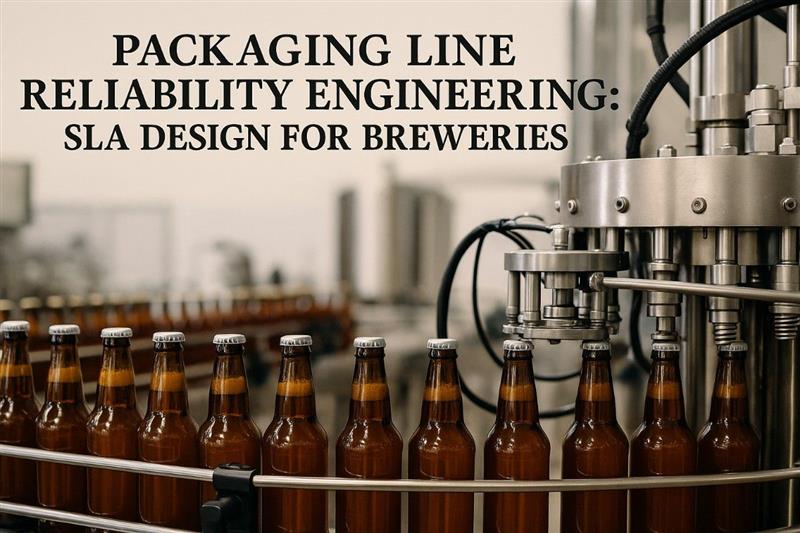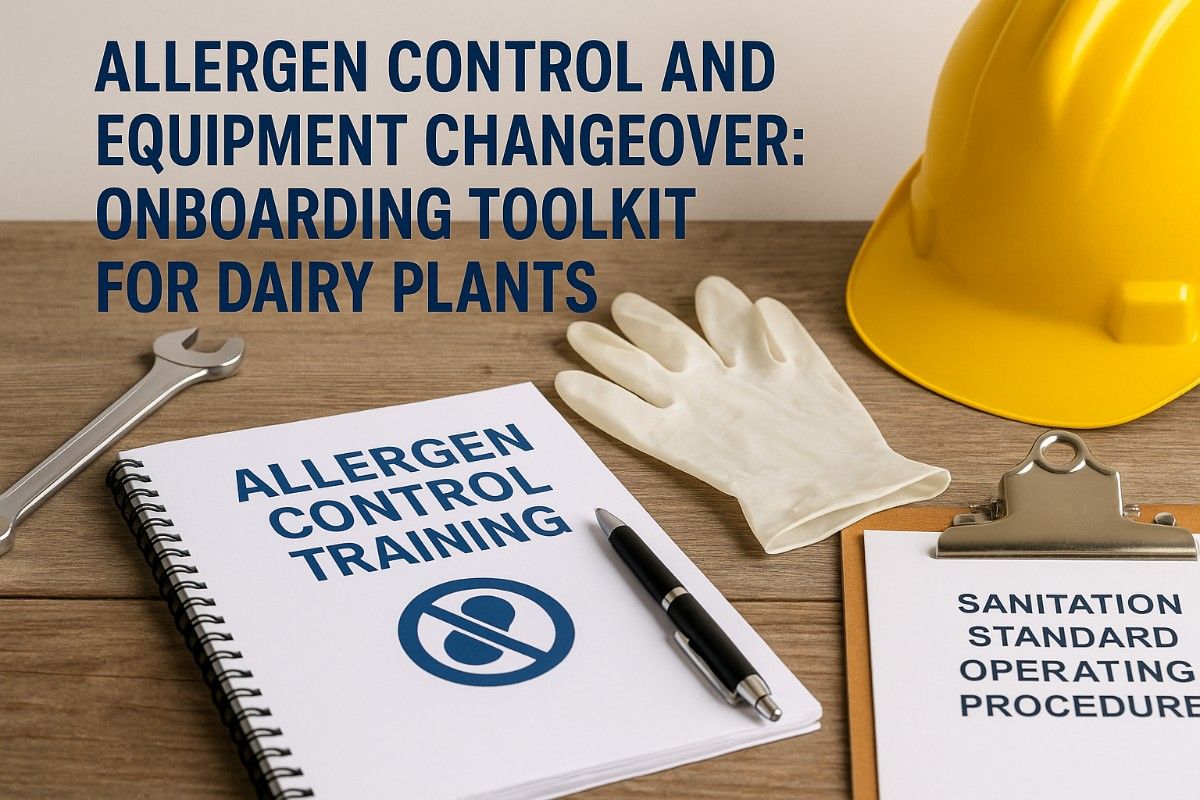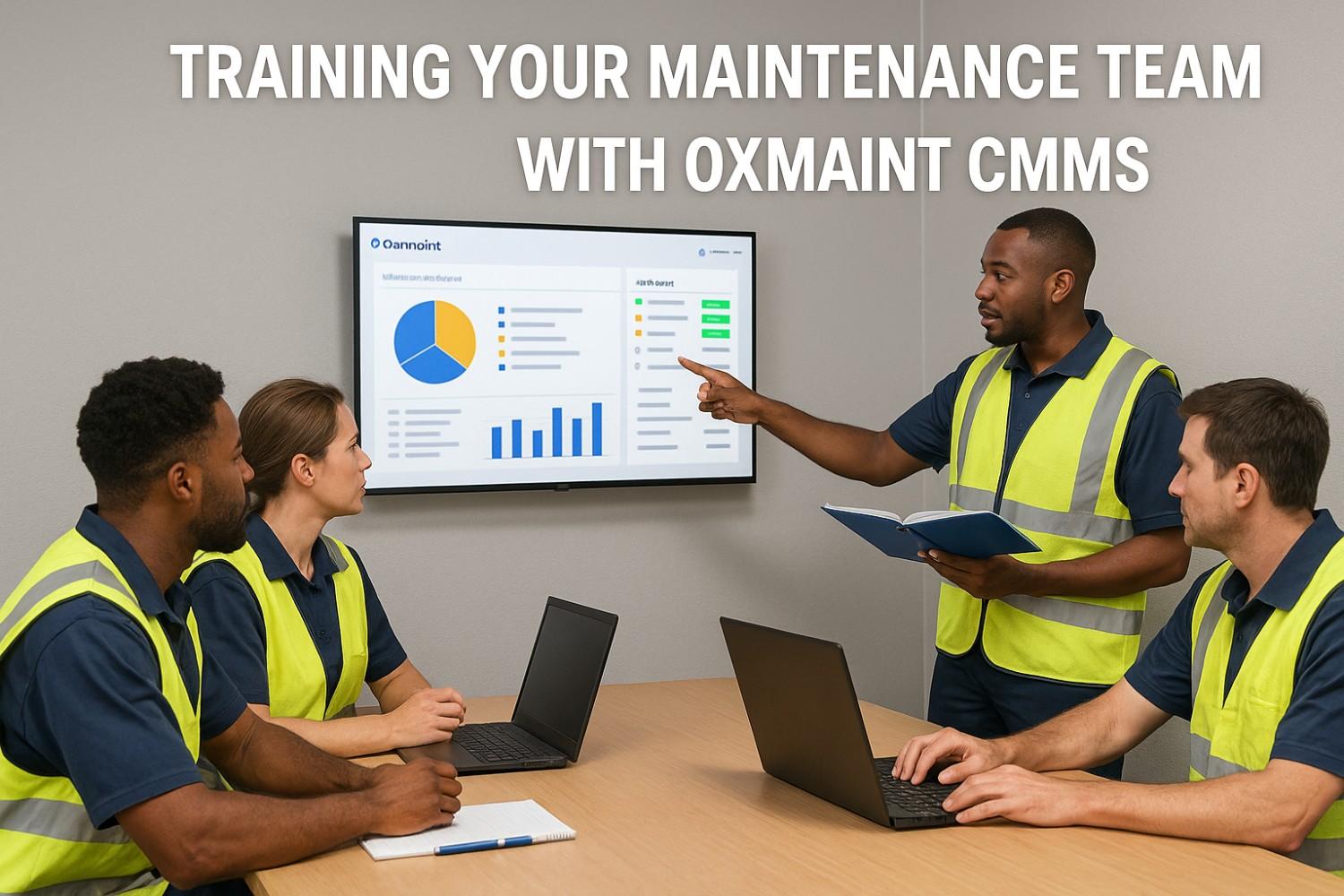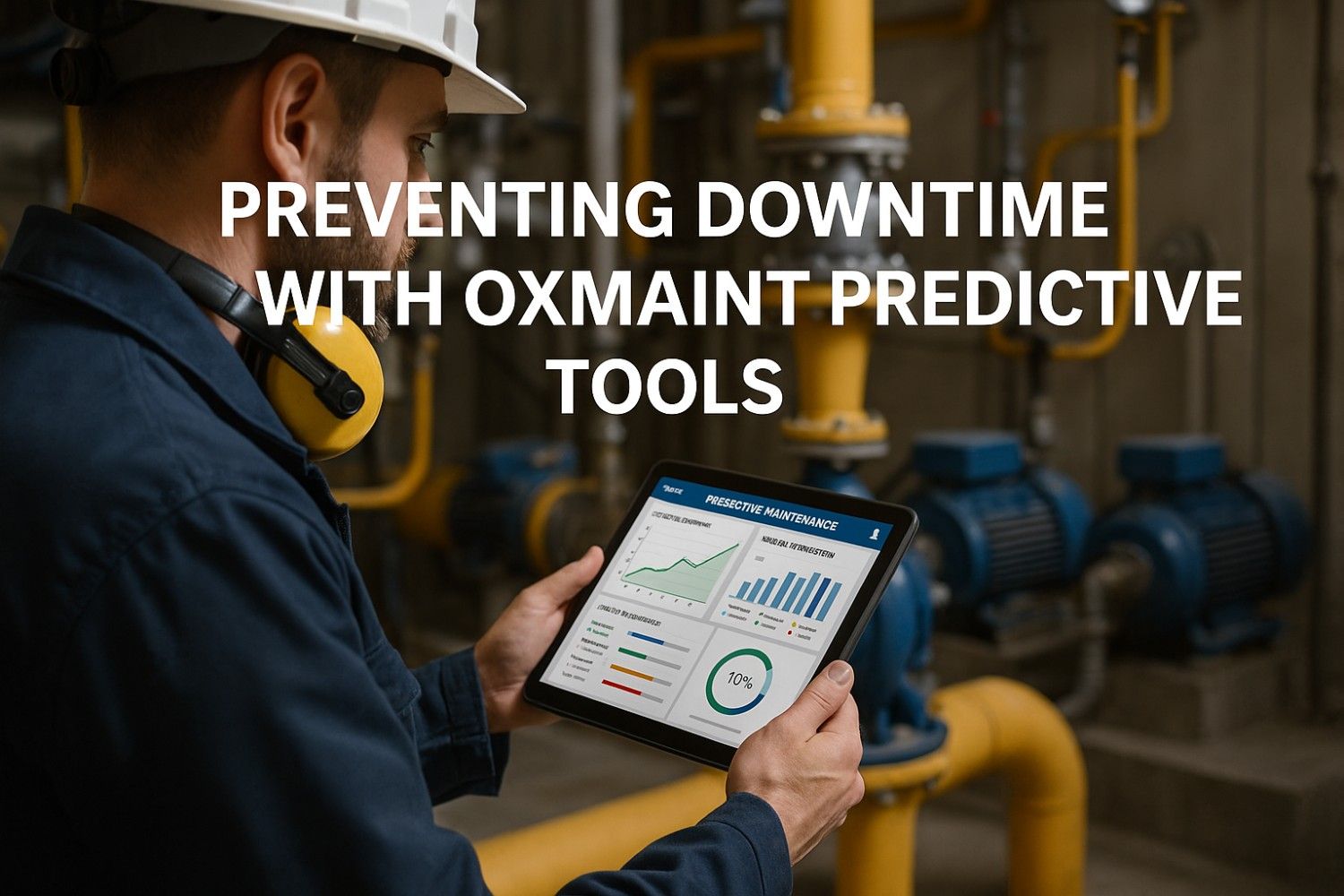Your packaging line supervisor bursts into the morning production meeting with alarming news: "The filler machine seized during last night's third shift—we lost 14,000 cases of product and the line's been down for 9 hours." You pull up the quarterly reports showing $2.3 million in lost production from packaging failures, yet your current maintenance approach provided zero advance warning. Without Service Level Agreement frameworks governing packaging line reliability and real-time equipment monitoring through IoT sensors, your brewery operates in perpetual crisis mode, gambling each shift on equipment that could fail catastrophically at any moment.
This devastating scenario repeats across American breweries and food & beverage manufacturing facilities daily as operations teams struggle with packaging line failures that destroy production schedules and erode profitability. The average brewery packaging line experiences 8-12% unplanned downtime annually, costing $15,000-$45,000 per hour in lost production, but strategic SLA design combined with predictive maintenance software can reduce packaging failures by 65-80%.
Breweries implementing structured reliability engineering frameworks with work order automation and AI analytics achieve 92-97% packaging line availability while reducing maintenance costs by 35-50% compared to reactive maintenance approaches. The transformation requires systematic SLA development, IoT sensor deployment, and mobile inspections that establish measurable performance standards across every critical packaging asset.
Ready to engineer packaging line reliability that guarantees 95%+ uptime through intelligent SLA frameworks?
Your competitors are achieving 97% packaging availability while you're losing $45,000 per hour to unexpected failures. Discover how structured SLAs and predictive maintenance transform brewery operations from reactive chaos to engineered reliability.
Understanding Packaging Line Reliability Engineering for Breweries
Effective packaging line reliability engineering requires understanding the sophisticated ecosystem of equipment, processes, and performance standards that govern brewery packaging operations. These systems extend far beyond simple maintenance scheduling to include SLA frameworks defining acceptable performance thresholds, risk scoring methodologies prioritizing maintenance activities, and audit trail documentation ensuring food & beverage manufacturing compliance requirements.
Traditional brewery maintenance operates reactively, addressing equipment failures as they occur rather than preventing them through systematic reliability analysis. Modern reliability engineering establishes quantified Service Level Agreements for each critical packaging asset—fillers, seamers, labelers, case packers—defining availability targets, mean time between failures (MTBF), and maximum acceptable response times that transform maintenance from cost center to competitive advantage.
SLA-Driven Availability Targets
Establishing 95-98% availability commitments for critical packaging equipment with escalation protocols when performance degrades. Creates accountability and measurement frameworks driving continuous improvement.
Risk Scoring Methodologies
Quantifying equipment failure probability and business impact to prioritize maintenance resources. High-risk assets receive enhanced monitoring through IoT sensors and accelerated inspection frequencies.
Barcode/QR Asset Tracking
Digital asset identification enabling instant access to maintenance history, specifications, and SLA parameters. Technicians scan equipment for immediate context during mobile inspections and repairs.
Work Order Automation
Automated work order generation based on condition monitoring alerts, calendar schedules, and SLA compliance thresholds. Eliminates manual scheduling while ensuring maintenance never falls behind commitments.
Integration complexity represents another critical factor often underestimated in reliability engineering programs. Success rates increase from 35-45% to 80-90% when implementations include Oxmaint CMMS integration connecting IoT sensors, work order automation, and performance dashboards into unified reliability management platforms.
SLA Performance Benchmarks by Packaging Equipment Type
Establishing appropriate SLA targets requires understanding realistic performance benchmarks across different packaging equipment categories. Investment in monitoring technologies, maintenance frequencies, and spare parts inventory varies significantly based on equipment criticality and failure mode complexity within food & beverage manufacturing environments.
Packaging line SLA design must balance aggressive availability targets against practical constraints including equipment age, operating conditions, and organizational maintenance maturity. Multi-site rollouts require standardized SLA frameworks while accommodating site-specific equipment configurations and production requirements.
| Equipment Type | Target Availability | MTBF Target | Max Response Time | Key Monitoring Parameters |
|---|---|---|---|---|
| Bottle/Can Fillers | 96-98% | 720+ hours | 15 minutes | Fill accuracy, valve timing, pressure stability |
| Seamers/Cappers | 95-97% | 500+ hours | 20 minutes | Seam dimensions, torque consistency, head timing |
| Labelers | 94-96% | 400+ hours | 25 minutes | Label placement accuracy, adhesive temperature |
| Case Packers | 93-95% | 350+ hours | 30 minutes | Pack patterns, timing synchronization |
| Conveyors | 97-99% | 1000+ hours | 10 minutes | Belt tension, motor temperature, alignment |
| Palletizers | 94-96% | 450+ hours | 25 minutes | Pattern accuracy, gripper pressure, cycle time |
Building Your Brewery SLA Framework: Implementation Roadmap
Creating an effective SLA framework requires systematic development combining asset criticality analysis, performance baseline establishment, and organizational capability building. Asset criticality assessment provides the foundation for SLA development, identifying packaging equipment where reliability investments deliver maximum production protection and cost benefits.
Maturity assessment provides the foundation for SLA framework development, identifying gaps between current reliability performance and desired capability levels. Simply adopting industry benchmarks without considering organizational context rarely produces sustainable reliability improvements in food & beverage manufacturing compliance requirements.
SLA Framework Development Process
IoT Sensor Infrastructure
30-40% of reliability investment for vibration, temperature, and performance sensors enabling predictive maintenance
CMMS Platform Integration
20-25% for Oxmaint CMMS deployment connecting sensors, work orders, and compliance documentation
Mobile Inspection Systems
15-20% for tablets, barcode/QR scanners, and mobile apps enabling field data collection
Training Programs
10-15% for technician certification, reliability engineering skills, and CMMS best practices education
Spare Parts Optimization
10-15% for critical spare inventory ensuring rapid response to SLA-triggering failures
Advanced Reliability Engineering Strategies
Strategic packaging line reliability extends beyond basic SLA establishment to include predictive analytics, automated diagnostics, and integrated performance optimization. The most successful breweries leverage advanced reliability engineering capabilities to create self-optimizing packaging ecosystems that continuously improve availability while reducing maintenance intervention requirements.
Data-driven optimization powered by AI analytics enables continuous SLA performance improvements. Facilities leveraging advanced analytics achieve 15-25% annual reliability gains through incremental optimizations invisible to traditional maintenance management approaches in food & beverage manufacturing environments.
Advanced Reliability Engineering Strategies
- Implement machine learning algorithms analyzing IoT sensor patterns to predict failures 14-30 days in advance
- Deploy automated root cause analysis reducing failure investigation time by 60-75%
- Integrate energy monitoring with reliability data identifying efficiency degradation indicating developing problems
- Create digital work instructions with barcode/QR access reducing repair time by 35-45%
- Build real-time SLA compliance dashboards providing operations immediate visibility into reliability performance
- Enable multi-site rollouts with standardized SLA frameworks while accommodating local equipment variations
- Establish audit trail documentation meeting food & beverage manufacturing compliance requirements automatically
2025 Brewery Reliability Trends Transforming Packaging Operations
- Edge computing enabling instant local failure prediction and automated protective responses
- Digital twin models simulating SLA scenarios before implementing changes on physical equipment
- 5G connectivity providing real-time condition monitoring across distributed packaging equipment
- AI-powered diagnostic systems providing automatic fault identification with recommended corrective actions
- Augmented reality interfaces overlaying equipment data during mobile inspections and repairs
- Blockchain integration creating immutable audit trails for regulatory compliance documentation
Competitive differentiation through reliability engineering requires moving beyond industry-standard SLA implementations to innovative applications that competitors cannot easily replicate. Leaders achieve 2-3x better production efficiency through proprietary reliability approaches combining advanced analytics with deep process knowledge.
Conclusion
Packaging line reliability engineering represents the most significant advancement in brewery operations management since automated packaging systems, enabling facilities to guarantee production availability through structured SLA frameworks rather than hoping equipment survives each shift. Organizations implementing comprehensive reliability programs achieve 92-97% packaging line availability while reducing maintenance costs by 35-50% through intelligent work order automation, IoT sensor deployment, and AI analytics integration.
Understanding SLA framework architecture reveals that successful implementations require sophisticated integration connecting condition monitoring, CMMS platforms, and performance dashboards into unified reliability management ecosystems. Performance varies significantly by equipment type and operating conditions, but modern reliability engineering programs consistently achieve 70-85% reduction in production-stopping failures for well-defined equipment categories.
Building effective reliability programs requires systematic assessment combining criticality analysis, baseline establishment, and phased SLA implementation. Success depends equally on technology deployment, organizational capability development, and sustained commitment to food & beverage manufacturing CMMS best practices.
The 2025 competitive environment rewards early adopters of advanced reliability engineering while penalizing reactive maintenance approaches that ignore equipment health indicators. Success requires balancing proven SLA methodologies delivering immediate availability improvements with emerging technologies positioning for future competitive advantage in increasingly demanding food & beverage manufacturing markets.
Ready to guarantee 95%+ packaging line availability through engineered reliability frameworks that eliminate production-stopping failures?
Every hour your packaging line sits idle costs $15,000-$45,000 in lost production. Your competitors are achieving 97% availability through structured SLAs and predictive maintenance—implement reliability engineering before your next catastrophic failure destroys another production schedule.









